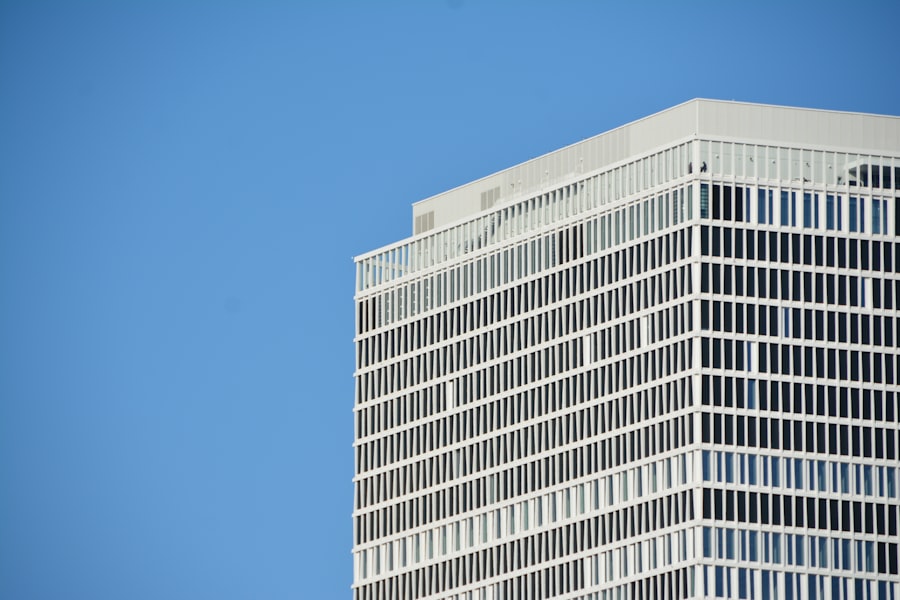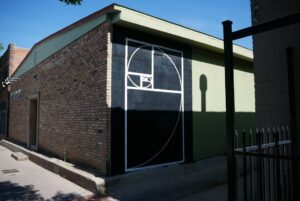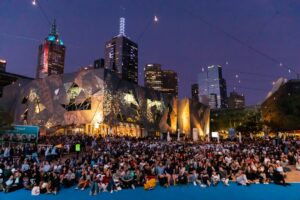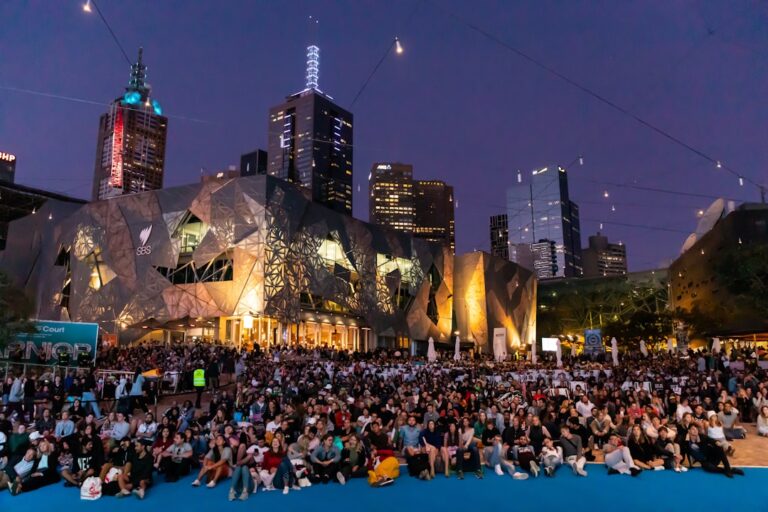Modern architectural wonders represent the pinnacle of human creativity and engineering prowess, showcasing how far we have come in our quest to redefine the built environment. These structures not only serve functional purposes but also embody the cultural, technological, and artistic aspirations of their time. From soaring skyscrapers that pierce the clouds to innovative public spaces that foster community interaction, modern architecture reflects the dynamic interplay between form and function.
As cities continue to grow and evolve, these architectural marvels stand as testaments to our ability to adapt and innovate in response to changing societal needs. The 21st century has ushered in a new era of architectural exploration, characterized by bold designs and groundbreaking technologies. Architects and designers are increasingly challenged to create spaces that are not only visually striking but also environmentally sustainable and socially responsible.
This shift in focus has led to the emergence of iconic structures that push the boundaries of traditional architecture, incorporating elements that enhance both aesthetic appeal and functionality. As we delve into the world of modern architectural wonders, we will explore the iconic skyscrapers that dominate city skylines, innovative design concepts that prioritize sustainability, and the integration of technology that shapes our built environment.
Key Takeaways
- Modern architectural wonders showcase the innovative and sustainable design concepts that have revolutionized the construction industry.
- Iconic skyscrapers and high-rise buildings have become symbols of modernity and economic power in cities around the world.
- Futuristic structures and landmarks push the boundaries of traditional architecture, creating new and awe-inspiring cityscapes.
- Cutting-edge materials and construction techniques have enabled architects to create structures that were once thought impossible.
- The integration of technology and architecture has transformed the way buildings are designed, constructed, and experienced, shaping urban landscapes and city skylines.
Iconic Skyscrapers and High-Rise Buildings
Skyscrapers have become synonymous with modern urban life, symbolizing economic power and technological advancement. The Burj Khalifa in Dubai, standing at an astonishing 828 meters, is a prime example of this phenomenon. Completed in 2010, it holds the title of the tallest building in the world, a feat achieved through advanced engineering techniques and innovative design.
The structure’s unique Y-shaped floor plan not only enhances its stability but also maximizes views of the surrounding desert landscape. The Burj Khalifa is not merely a tall building; it is a complex ecosystem that includes residential apartments, corporate offices, and luxury hotels, all interconnected through a series of elevators and communal spaces. Another remarkable example is the Shanghai Tower, which rises to 632 meters and features a twisting design that reduces wind loads on the structure.
Completed in 2015, it is the tallest building in China and the second tallest in the world. The tower’s innovative double-skin façade enhances energy efficiency by providing insulation while allowing natural light to permeate the interior spaces. This design not only contributes to the building’s sustainability but also creates a visually stunning exterior that reflects the dynamic nature of Shanghai itself.
These skyscrapers exemplify how modern architecture can blend aesthetic appeal with practical functionality, creating landmarks that define their cities.
Innovative and Sustainable Design Concepts

Sustainability has become a cornerstone of modern architectural practice, with architects increasingly prioritizing eco-friendly design principles. The Bosco Verticale, or Vertical Forest, in Milan is a striking example of this trend. Completed in 2014, this pair of residential towers is adorned with over 9,000 trees and 20,000 plants, creating a lush vertical garden that helps combat urban pollution.
This innovative approach to urban living demonstrates how architecture can harmonize with nature, creating healthier environments for residents.
Another notable example is the Eden Project in Cornwall, England, which consists of a series of biomes housing diverse plant species from around the world. Designed by architect Sir Nicholas Grimshaw and completed in 2001, this project showcases sustainable design through its use of geodesic domes made from ETFE (ethylene tetrafluoroethylene) plastic. The biomes are energy-efficient and utilize natural ventilation systems to regulate temperature, minimizing reliance on artificial heating and cooling.
The Eden Project serves as both an educational facility and a tourist attraction, highlighting the importance of biodiversity and environmental stewardship in contemporary architecture.
Futuristic Structures and Landmarks
| Structure/Landmark | Location | Height (meters) | Year Built |
|---|---|---|---|
| Burj Khalifa | Dubai, UAE | 828 | 2010 |
| Shanghai Tower | Shanghai, China | 632 | 2015 |
| Space Needle | Seattle, USA | 184 | 1962 |
| Lotus Temple | New Delhi, India | 40 | 1986 |
Futuristic architecture often blurs the lines between art and functionality, resulting in structures that challenge conventional design norms. The Guggenheim Museum Bilbao, designed by Frank Gehry and completed in 1997, is a prime example of this avant-garde approach. Its organic forms and titanium cladding create a sculptural presence that has transformed the city of Bilbao into a cultural hub.
The museum’s design not only serves as an exhibition space for contemporary art but also revitalizes the surrounding urban landscape, attracting millions of visitors each year. Similarly, the Heydar Aliyev Center in Baku, Azerbaijan, designed by Zaha Hadid and completed in 2012, exemplifies fluidity in architectural form. The building’s sweeping curves and lack of sharp angles create an inviting atmosphere that encourages public engagement.
This landmark serves as a cultural center for exhibitions and performances while symbolizing Azerbaijan’s progressive vision for the future. Both structures illustrate how futuristic design can transcend traditional boundaries, creating spaces that inspire creativity and foster community interaction.
Cutting-Edge Materials and Construction Techniques
The evolution of materials science has played a crucial role in shaping modern architecture. The use of advanced materials such as carbon fiber composites, self-healing concrete, and 3D-printed components has revolutionized construction practices. For instance, the use of carbon fiber in structural applications allows for lighter yet stronger components, enabling architects to create more daring designs without compromising safety or stability.
This innovation is evident in projects like the One World Trade Center in New York City, where advanced materials were employed to enhance both structural integrity and aesthetic appeal. 3D printing technology has also emerged as a game-changer in construction. The ICON company has pioneered efforts to build affordable housing using 3D-printed concrete structures.
Their project in Austin, Texas, known as “ICON House,” demonstrates how this technology can reduce construction time and costs while maintaining high-quality standards. By utilizing robotic arms to layer concrete precisely, architects can create intricate designs that were previously unattainable with traditional construction methods. This shift towards innovative materials and techniques not only enhances design possibilities but also addresses pressing issues such as housing shortages and sustainability.
Integration of Technology and Architecture

The integration of technology into architectural design has transformed how we interact with our built environment. Smart buildings equipped with Internet of Things (IoT) devices can optimize energy usage, enhance security, and improve occupant comfort through automated systems. The Edge in Amsterdam is often cited as one of the smartest buildings in the world, featuring an array of sensors that monitor everything from lighting to temperature.
This data-driven approach allows for real-time adjustments based on occupancy patterns, significantly reducing energy consumption while creating a more comfortable workspace for employees. Moreover, augmented reality (AR) and virtual reality (VR) technologies are revolutionizing architectural visualization and design processes. Architects can now create immersive experiences that allow clients to explore spaces before they are built.
For example, firms like Gensler have utilized VR to present design concepts to clients in a fully interactive environment, enabling them to make informed decisions about layouts and materials. This technological integration not only enhances collaboration between architects and clients but also streamlines the design process, ultimately leading to more successful projects.
Cultural and Historical Significance of Modern Architectural Wonders
Modern architectural wonders often carry deep cultural and historical significance, reflecting the values and aspirations of societies at specific points in time. The Sydney Opera House is an iconic example; its distinctive sail-like design has become synonymous with Australia itself. Designed by Jørn Utzon and completed in 1973, this masterpiece not only serves as a performing arts venue but also symbolizes Sydney’s cultural identity on the global stage.
The building’s unique form was inspired by natural elements such as shells and sails, showcasing how architecture can embody cultural narratives while pushing artistic boundaries. Similarly, the National Museum of African American History and Culture in Washington D.C., designed by David Adjaye and opened in 2016, stands as a powerful testament to African American history and culture. Its design incorporates elements inspired by African American heritage while addressing themes of resilience and hope.
The museum’s bronze-colored façade features intricate patterns reminiscent of African art forms, creating a dialogue between past and present. Such structures not only serve as physical spaces for education and reflection but also contribute to broader conversations about identity, history, and social justice.
Impact on Urban Landscapes and City Skylines
The emergence of modern architectural wonders has significantly transformed urban landscapes around the globe. Iconic structures like the Petronas Towers in Kuala Lumpur or the Taipei 101 have become defining features of their respective skylines, attracting tourists while instilling local pride among residents. These buildings often serve as symbols of economic growth and innovation within their cities, influencing urban planning decisions for years to come.
Moreover, modern architecture has prompted cities to rethink public spaces and community engagement. Projects like New York City’s High Line—a repurposed elevated railway turned public park—demonstrate how innovative design can revitalize urban areas while promoting sustainability. By integrating green spaces into densely populated environments, architects are fostering healthier lifestyles while enhancing social interaction among residents.
As cities continue to evolve in response to population growth and environmental challenges, modern architectural wonders will play an essential role in shaping their future trajectories. In conclusion, modern architectural wonders encapsulate humanity’s relentless pursuit of innovation while reflecting cultural values and aspirations across time periods. From iconic skyscrapers that redefine city skylines to sustainable designs that harmonize with nature, these structures serve as both functional spaces and artistic expressions.
As we continue to explore new materials, technologies, and design philosophies, it is clear that modern architecture will remain at the forefront of shaping our built environment for generations to come.
If you are interested in exploring the connection between architecture and symbolism, you may find the article on Exploring Symbolism and Theories of Many-Valued Logic to be intriguing. This article delves into the deeper meanings behind various symbols and how they can be interpreted in the context of many-valued logic. Understanding the symbolism in architecture can provide valuable insights into the cultural and historical significance of different structures and designs.





















+ There are no comments
Add yours